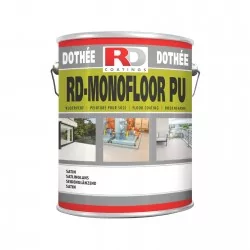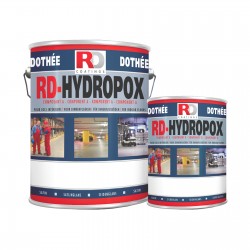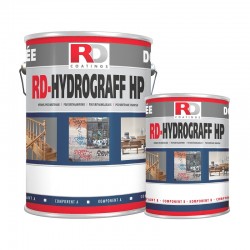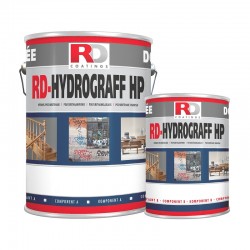Giving a floor anti-slip properties
We describe below a simple and quick method to make a floor non-slip, thereby ensuring the safety of people walking on it.
Whether it's an indoor or outdoor floor, giving it anti-skid properties will reduce the risk of slips and falls.



Products presented
RD-Monofloor PU Fast drying floor paint for workshops, technical rooms and balconies.
Fast drying floor paint for workshops, technical rooms and balconies.
RD-Hydropox Coating system for floors and walls specially formulated for the long-term protection against...
Coating system for floors and walls specially formulated for the long-term protection against...
RD-Hydrograff HP Satin Extremely resistant satin gloss paint, specifically designed to provide long-lasting...
Extremely resistant satin gloss paint, specifically designed to provide long-lasting...
RD-Hydrograff HP Clear Satin Very resistant clear satin gloss varnish, formulated for long-term protection of surfaces...
Very resistant clear satin gloss varnish, formulated for long-term protection of surfaces...
The problem
While some floor paint systems may already have anti-slip properties, others are less effective or become very slippery, especially when wet: puddles, rain, cleaning etc.
The solution
In combination with one of our floor products; RD-Hydropox, RD-Hydrograff HP, or RD-Monofloor PU, we add an aggregate during application to enhance the anti-slip properties of a floor coating.
Dry Quartz Sand
Sometimes more readily available, it is also very suitable for making a floor non-slip.
Granulation:
• 0,1 - 0,3 mm
• 0,5 - 1,0 mm

Glass Beads – Granulometry 0.125 to 0.6 mm
Polished and rounded to avoid any risk of cuts, glass beads are commonly used to make a surface non-slip. The polished surface of the beads provides a less rough texture.

Systems
| Product | Quantity | Result | ||
Quartz sand | 10 - 25 m² / kg 45 - 122 sq-f / lbs | Moderate anti-slip effect, moderately rough surface. | ||
| Quartz sand 0,5 - 1,0 mm | 10 - 25 m² / kg 45 - 122 sq-f / lbs | Significant anti-slip effect. | ||
| Glass beads | Light broadcast : 0,30 kg/m² 13 sq-f / lbs before brushing. | Moderate anti-slip effect. | ||
| Glass beads | Full broadcast : 0,85 kg/m² 5,5 sq-f / lbs before brushing. | Significant anti-slip effect. | ||
| Glass beads | Mixing in paint : 250 g per Liter (2 lbs per Gal) or 175 g per Kg (0.4 lbs per lb) | Medium to high anti-slip properties. | ||
Application conditions and work preparation
Refer to the technical data sheet of the chosen coating for details on surface preparation, application conditions, dilution, etc.
Matériel d'application
Quartz sand / Glass beads
The granules are broadcasted either manually or sprayed.
Spray: use a low-pressure spraying equipment with a nozzle opening of at least 18 mm; air pressure 1 to 3 bars / 14 to 45 psi.
/!\ With glass beads, it is also possible to mix them directly into the paint before application.
Products application
Method 1: By Spraying
Apply the granules directly on the first coat of paint whils it’s wet.
Uniformly spray the aggregate onto the first layer of the freshly applied coating so that the grains adhere to the wet paint.
This should be done progressively as the work proceeds, do not wait for the coating to dry!
The amount can range from a light to full broadcast (the entire surface is densely covered).

Full broadcast

Light broadcast
Allow the coating to dry according to the time indicated in its technical data sheet.
Once the paint is dry, sweep and remove the excess grains that did not adhere, and apply the second coat of the paint system. The second coat will encapsulate the aggregate within the paint film.
Method 2: Mixing Glass Beads Directly into the Paint Can
Mechanically mix the glass beads with the paint.
Apply a first coat of paint and let it dry.
Apply a second coat:
- With glass beads for moderate anti-slip properties.
- Without glass beads for mild anti-slip properties.

Application : Mixing into the Paint
VERS. S48-240725










